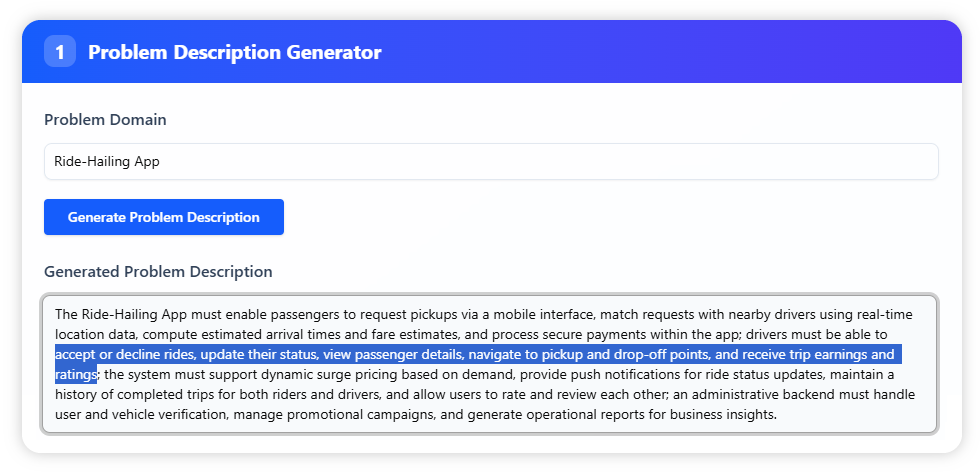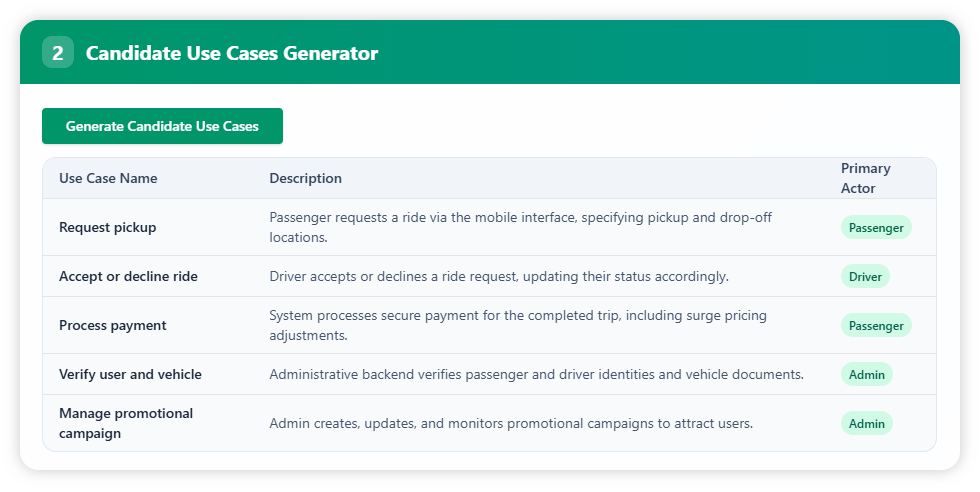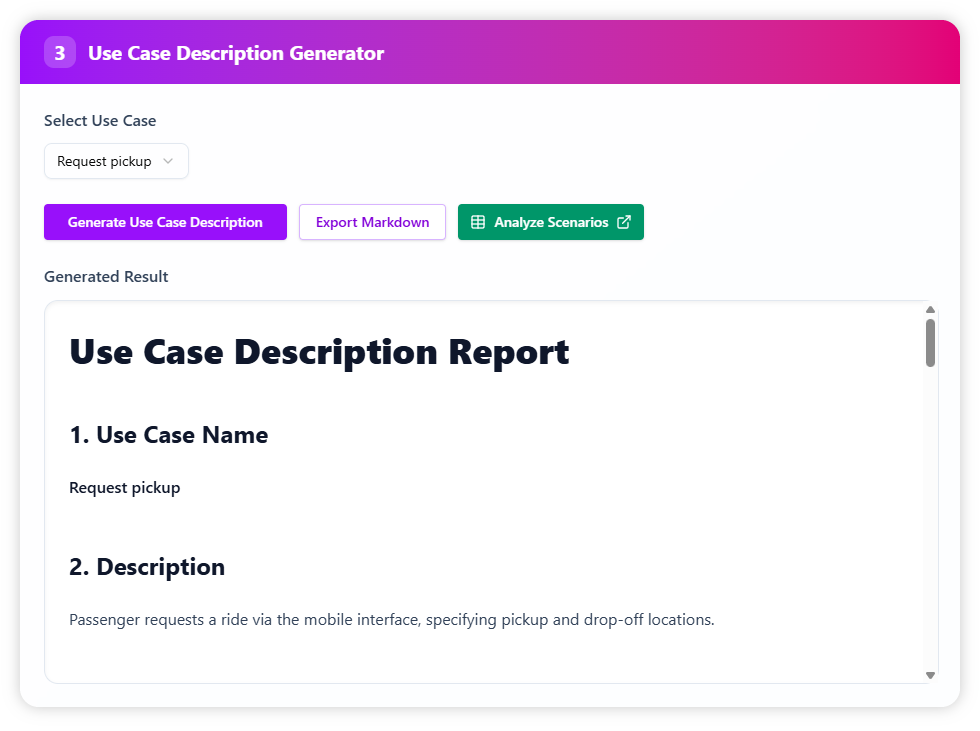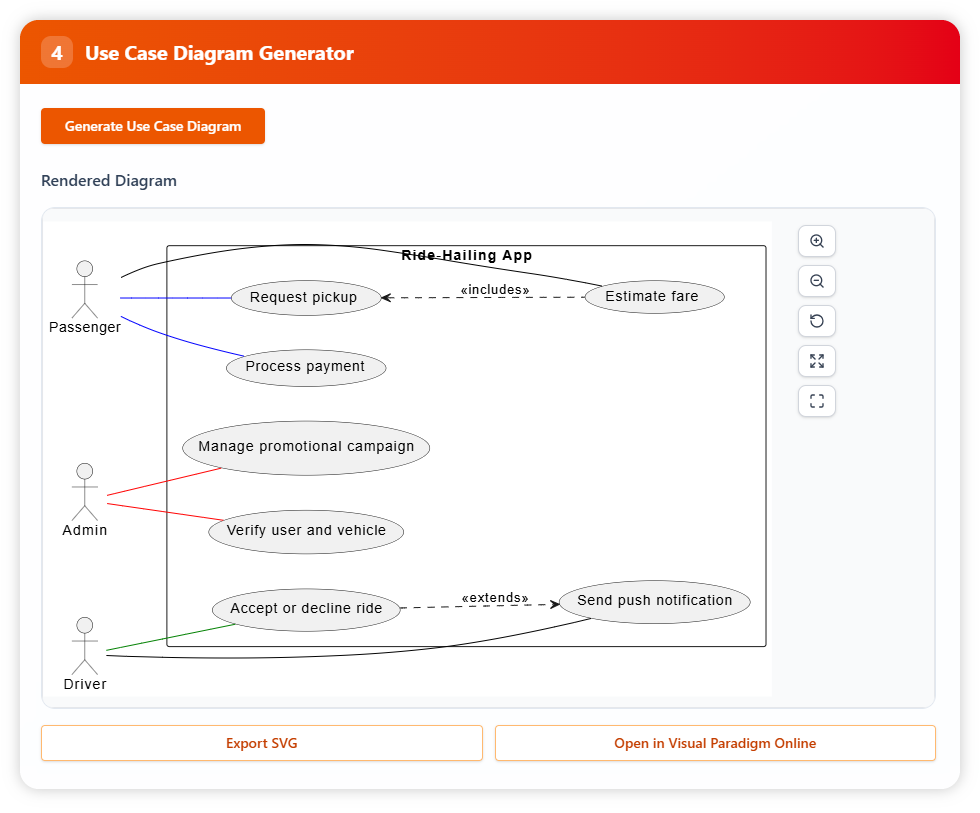Now Reading: AI-Generated Use Case Description: Ride-Hailing App Example
-
01
AI-Generated Use Case Description: Ride-Hailing App Example
AI-Generated Use Case Description: Ride-Hailing App Example
A ride-hailing app connects passengers with drivers through real-time location data and in-app transactions. This example shows how the use case description generator organizes passenger, driver, and administrator interactions into clear, structured models.
Step 1: Problem Description Generator
Enter Ride-Hailing App as the problem domain. The tool generates a complete and editable problem description, capturing passenger ride requests, driver acceptance, payment processing, surge pricing, ratings, and administrative functions. You can adjust the description to reflect the policies or business rules of your platform.

Step 2: Candidate Use Cases Generator
Click the “Generate Candidate Use Case” button to view suggested use cases with their name, description, and primary actor. In this case, examples include requesting pickups, accepting or declining rides, processing payments, verifying users and vehicles, and managing promotional campaigns.

Step 3: Use Case Description Generator
Select one use case to expand into detail. Here, the chosen case is Request Pickup. The tool generates a structured description including preconditions, main flow, alternative flows, and exceptions, giving a complete picture of the ride request process. The description can also be exported in Markdown format for documentation or team collaboration.

Step 4: Use Case Diagram Generator
Finally, generate a use case diagram showing how passengers, drivers, and administrators interact with the app’s key features. The diagram can be exported as SVG or opened in Visual Paradigm Online for editing and refinement.


